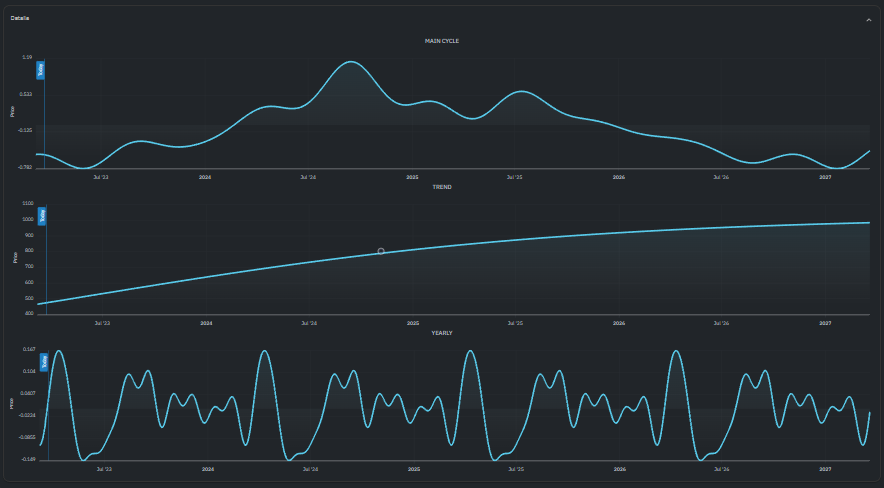20 Top Pieces Of Advice For Deciding On AI Stock Analysing Sites
20 Top Pieces Of Advice For Deciding On AI Stock Analysing Sites
Blog Article
Top 10 Tips For Evaluating Market Coverage By Ai Trading Platforms And Stock Forecasting
The market coverage of the trading platforms for AI analysis and prediction of stocks is crucial because it defines the assets and markets that you have access to. A platform with extensive market coverage allows you to diversify your portfolio, explore global opportunities, and adapt to a variety of trading strategies. Here are the top ten ways to assess the market cover of these platforms.
1. Evaluate Supported Asset Classes
Stocks: Make sure the platform includes major stock exchanges (e.g., NYSE, NASDAQ, LSE, HKEX) and also includes small-cap, large-cap and mid-cap stock.
ETFs - See if your platform supports an extensive range of ETFs that provide exposure to a variety of different sectors, regions or themes.
Futures and options. Verify that the platform is able to handle derivatives, such as options, futures, and other instruments leveraged.
Forex and commodities: Find out whether your website offers commodities and forex, precious metals, and energy commodities.
Cryptocurrencies Check whether the platform can support popular cryptocurrencies like Bitcoin, Ethereum, and altcoins.
2. Check Coverage Area
Global markets: The platform should be able to cover the major global markets, including North America and Europe, Asia-Pacific and emerging markets.
Regional focus: Find out whether the platform is focusing on specific regions or market segments that are in line with your preferences for trading.
Local exchanges: Make sure you know whether the platform supports regional or local exchanges that relate to your specific location or plan.
3. Take a look at comparing real-time data delayed data Data that is delayed
Real-time information - Make sure your platform is able to provide real-time market information to aid you in making quick decisions, particularly for traders who are active.
Delayed data - Check whether delayed data is available for free or is available at a lower cost. This could be enough for investors looking to invest in the long term.
Data latency - Verify that the platform reduces latency of real-time feeds. This is crucial for high-frequency traders.
4. Review the availability of historical data
Historical data depth If the platform is available, ensure that it has vast historical data (e.g. 10, more than 10 years) for backtesting and analysis.
Check the level of precision in historical data.
Corporate actions: Find out if the historical data include dividends and stock splits.
5. Check Market Depth and Order Books
Level 2 data: Ensure that your platform is equipped with Level 2 information for price discovery and better execution.
Bid-ask Spreads: Make sure that the platform shows live spreads between bid and request for the most accurate pricing.
Volume data - Verify whether the platform contains detailed volume information for analyzing the market's activities and liquidity.
6. Examine the coverage of Indices and Sectors
Major indices: Ensure that your platform is compatible with major indices like the S&P 500 (e.g. NASDAQ 100 or FTSE 100), for benchmarking based on indexes.
Specific data for a specific sector to provide targeted analysis, look into whether the platform provides data on a particular industry (e.g. healthcare, technology, or energy).
Custom indices: Verify whether the platform supports the creation or tracking of customized indices based on your requirements.
7. Test the combination of Sentiment and News Data
News feeds - Ensure the platform has integrated real-time news feeds for market-moving stories from reputable (e.g. Bloomberg or Reuters) sources.
Sentiment Analysis: Find out whether the platform provides sentiment analysis tools that are built on social media, news or other sources of data.
Event-driven strategy: Make sure that the platform is compatible with the use of event-driven trading strategies (e.g. announcements of earnings economic reports, announcements of earnings).
8. Check for Multi Market Trading Capabilities
Cross-market trade: Make sure the platform supports trading across markets and asset categories from a common interface.
Conversion of currencies Check to see whether you can automate the conversion of currencies for international trades and if there are multiple currency options for your account.
Support for time zones of different times It is important to ensure that the platform supports trading on global markets in different time zones.
9. Assess Coverage of Alternative Data Sources
Alternative data - Check to determine if there are alternative sources of data that can be that are integrated into the platform (e.g. web traffic, satellite imagery or credit card transactions). This will give you unique insights.
ESG Data Look to determine whether there is any data on the environment, social or governance (ESG data) that are part of the platform for socially responsible investing.
Macroeconomic data - Make sure that the platform has macroeconomic data (e.g. GDP, inflation) for fundamental analysis.
Review Market Reputation and User Reviews
Feedback from users is an excellent method to assess the market coverage of a platform.
Reputation of the industry Know whether there are awards or experts who recognize the platform for its coverage of the market.
Seek out testimonials that show the effectiveness of the platform in particular markets and asset classes.
Bonus Tips
Trial period - You can use the free demo or trial to check out the data coverage and market coverage.
API access: Verify whether the platform's API permits access to market data in a programmatic manner for customised analysis.
Customer Support: Make sure that the platform is able offer support for any market-related issues or data issues.
If you follow these guidelines to evaluate the market coverage offered by AI stock predicting/analyzing trading platforms and ensure that you select a platform that provides access to the markets and data you need for a successful trading. Comprehensive market coverage lets you to diversify and explore your portfolio. It also helps you adapt to market changes. See the top rated https://www.inciteai.com/trader for blog examples including trading ai, incite, best ai stocks to buy now, ai trading software, best ai copyright, ai stock prediction, ai stock market, ai trading tools, trading ai bot, ai for copyright trading and more.
Top 10 Tips To Assess The Scalability Ai Technology For Predicting And Analyzing Trading Platforms
It is crucial to evaluate the scalability and performance of AI-driven stock prediction and trading platforms. This will guarantee that they are able to manage the growing volume of data in addition to market complexity and demands from users. These are the top ten ways to determine scalability.
1. Evaluate Data Handling Capacity
Find out if your platform is able to analyze or process large amounts of data.
What is the reason? Scalable platforms should be able handle growing volume of data without performance degradation.
2. Test real-time processing capabilities
Find out the way the platform handles real-time streams of data, including news and stock prices.
What is the reason? Analyzing in real-time is crucial to make trading decisions. delays could result in missed opportunities.
3. Cloud Infrastructure and Elasticity
TIP: Make sure your cloud platform (e.g. AWS, Google Cloud or Azure) and able to scale resources dynamically.
Why is that the cloud platform's elasticity allows the size of the system to adapt based on use.
4. Examine Algorithm Efficiency
Tips: Examine the computational efficiency and the accuracy of AI models to make predictions.
Reason: Complex algorithms can be resource-intensive, and optimizing them is essential to scaling.
5. Examine the parallel Processing and distributed computing
Tips: Check if the platform uses parallel processing frameworks or distributed computing frameworks.
The reason: These technologies enable more efficient data processing and analytics across many nodes.
Review API Integration.
Tip: Check the platform's integration with external APIs.
Why? Because the platform can adapt to changing data sources and trading environments thanks to seamless integration.
7. Analyze User Load Handling
Try simulating high traffic levels to see how your platform performs.
The reason: A platform that is scalable should maintain performance even when the number of users increase.
8. Examine the model of Retraining and its Adaptability
Tips: Find out how frequently and how effectively AI models are re-trained by using fresh data.
The reason is that markets always change and evolving, it's important to keep models up-to-date.
9. Verify Fault Tolerance and Redundancy
Tip. Make sure that your platform has failover mechanisms and redundancy to handle hardware or software problems.
Why? Downtime in trading can be expensive, and fault tolerence is important to allow for scaling.
10. Monitor Cost Efficiency
Tip: Consider the cost of scaling your platform. Be aware of cloud resources like storage for data and computing power.
Why: Scalability should not be a burden that is unsustainable which is why balancing performance with expense is critical.
Bonus Tip: Future-Proofing
Ensure the platform is built to take advantage of new technologies (e.g., quantum computing and advanced NLP) and be able to adjust to regulatory changes.
These aspects can assist you in assessing the scaleability of AI-based stock prediction systems and trade platforms. They'll also make sure they're robust efficient, reliable and ready to expand, and future-proof. Follow the most popular ai bot for copyright trading tips for more tips including ai stock market, ai stock trading app, stock market ai, ai investing, ai stock trading app, ai trading bot, ai for stock trading, ai stock market, stock market ai, trading with ai and more.